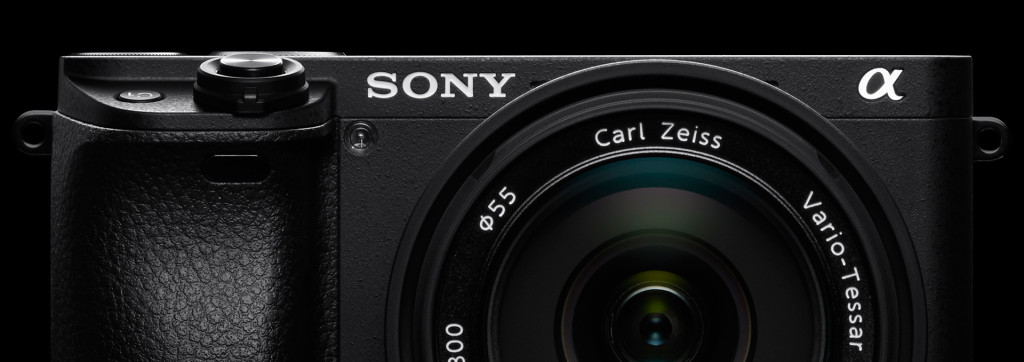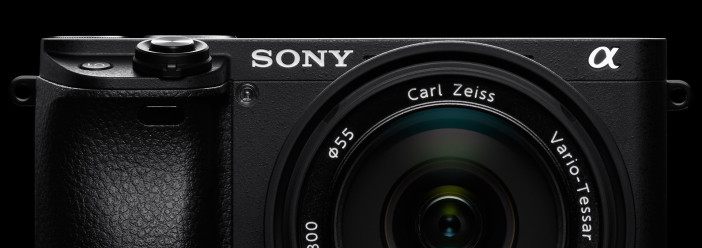Early adopters have put the Sony A6300 image quality and autofocus to the test – the results are incredible (see below).
Could Sony have achieved something very special with their combination of 6K sensor readout and 425 phase detect points?
https://www.youtube.com/watch?v=8SZsCAEB4wA
https://www.youtube.com/watch?v=SOFdnwK1oAQ
Above: early adopters in China have been putting the A6300 video mode AF to test (via EOSHD Forum)
Since Canon rolled out Dual Pixel AF on the C100 and C300 for Cinema EOS shooters, dramatic progress has taken place with the technology at leading sensor manufacturers Sony and Samsung,
Samsung just introduced a smartphone (the Galaxy S7) with dual pixel AF, an astonishing 12 million phase detect pixels – that’s one on every pixel of the sensor with 100% coverage. Sony have announced a large Super 35mm sensor with the A6300 that has 425 AF points entirely devoted to focus, spread across the entire frame. In addition Sony have added a forth dimension (time) to the spatial awareness of their AF processor. On the Sony A6300 the image processor is able to predict the subject’s next move, for example whether a car is coming towards the camera or away from it. This extra information is used to improve both the speed and reliability of autofocus.
Compared to a professional sports DSLR from Canon or Nikon how does 425 phase-detect AF points stack up? When shooting through the optical viewfinder on the new 1D X Mark II the DSLR makes use of just 61 phase detect AF points and they don’t cover the entire frame. If 61 is good enough for the pro sports photographer imagine what 425 can do for video users on the A6300. Also the A6300 has nearly 8 times more on-chip AF points than its predecessor, the A6000 – which already offered one of the best AF systems of any mirrorless camera.
How is phase-detect AF better than contrast-detect AF
Contrast detect AF rapidly shifts the AF motors of the lens back and forwards in an every decreasing range to find the highest micro-contrast and sharpness for any given point in the frame.
The advantage of phase detect AF is that the lens motors no longer need to hunt back and forth or shimmer rapidly back and forth to confirm focus.
We have all seen this on cameras like the Panasonic GH4 or Sony A7S where AF in video mode gives an electronic looking vibrating focus where sharp detail pulses.
It is slower too as a lot of confirming and re-confirming is done constantly between the sensor and lens AF motors.
With phase detect AF the lens motor only moves in one direction – either forwards to the object or backwards to the object. Done.
It is like having a manual focus puller in a box working on your behalf for free without even a union.
Sony 4D AF versus Canon Dual Pixel AF
Canon have patented two on-sensor phase detect AF systems. Hybrid CMOS AF and Dual Pixel AF.
On paper it seems the Sony A6300’s sensor has more in common with the inferior Hybrid CMOS AF than Dual Pixel AF but real-world performance seems to suggest otherwise. The Sony A6300 has a new image processor and sensor – it has a lot of tricks up its sleeve.
Canon’s Hybrid CMOS AF replaces a few of the red, green and blue photodiodes entirely with AF phase detect pixels, which aren’t used to form the image. Instead they are 100% devoted to the task of phase detect AF like on the Sony A6300.
Dual Pixel AF on the other hand turns an ordinary light capturing RGB photodiode into a phase detect AF sensor without altering its ability to also capture RGB image data. Therefore every pixel can be a phase detect AF point.
The way this works is that every RGB diode used to capture light is split into 2 halves – the left and right diodes work like two human eyes to determine focus. The sensor also uses modified micro lenses to direct light into these two separate diodes.
Then the image information is summed from the two diodes to create one RGB photodiode.
On the Sony A6300 the 425 photodiodes substituted by AF pixels don’t create dead pixels in the image due to the way a Bayer CMOS sensor works. Bayer is a matrix of red, blue and green photodiodes and a system of interpolation. Each pixel on a bayer sensor only captures 1/3rd of the colour information for any given point in the image – the final pixel is actually created by interpolating data from neighbouring pixels. For example a green pixel is combined with information from neighbouring red and blue pixels. The result is less resolution and colour accuracy but a faster running sensor which can also do tricks. 425 missing green photodiodes out of the millions on the sensor just need to interpolate from their neighbours a little more.
Although Dual Pixel AF is the superior technology, on a Canon DSLR it only covers 80% of the frame (and much less on the C300). It is not 100% like Samsung’s version on their S7 smartphone and it doesn’t go into the edges like Sony’s system on the A6300.
Unfortunately for video users to make use of this feature we must sacrifice image quality (in the case of the 70D and 80D without 4K or LOG) or features. Otherwise one has to spend 10x more than the cost of a Sony A6300 on a C300 just to get back LOG, sharp 1080p and a broad range of video features, or 6x more on a 1D X Mark II to get back Super 35mm 4K image quality, which in technical terms means that although Canon’s implementation of the technology is A-ok, the marketing of it is highly targeted at Video Oligarchs and people who like moire.
Something else to take into account is the speed of the bus between the camera mount and lens. The EF lens range was developed a long time ago and the communication protocols between the AF motors and the camera sensor are very basic. On the newer mirrorless cameras not only are the lens AF motors quieter and faster than on EF lenses there’s less latency on the bus.
So although the A6300’s system may seem like it has more in common with Hybrid CMOS AF than Dual Pixel AF, there are many other variables which influence AF performance for video – the lenses certainly are a big factor.
The other is the image processor itself. As well as the forth dimension of time being utilised to predict the movement of a subject, it uses a very high frame rate in live-view mode for stills so that AF samples are taken from the sensor at a quicker rate. Indeed this also makes 120fps full HD possible on the A6300, a feature lacking entirely from the Canon 80D.





